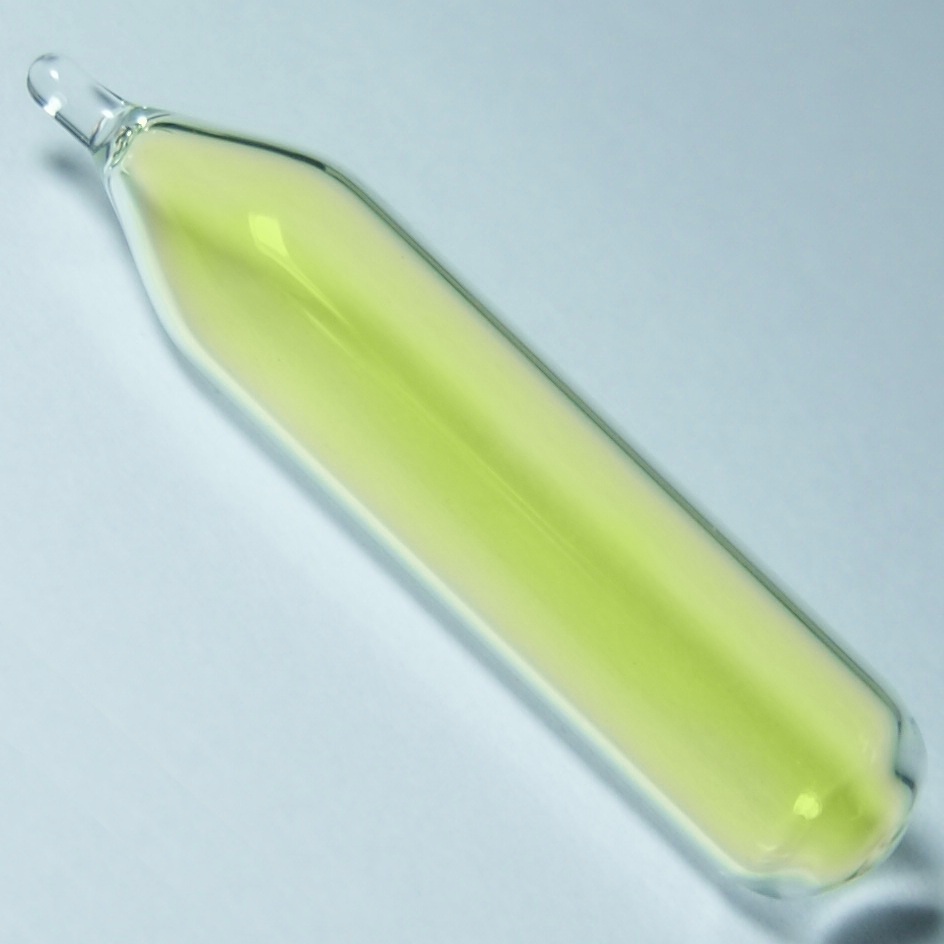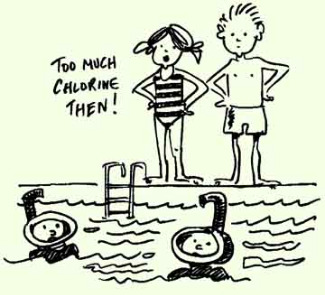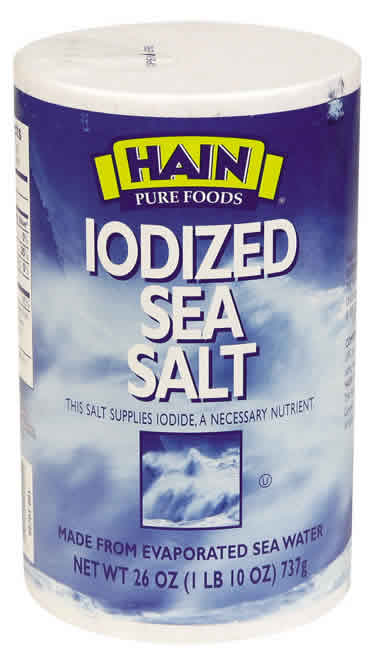Happy New Year! In addition to being the first day of solar year, as marked on the Gregorian calendar, today has the distinction of being a Wednesday. You may all remember what that means. It’s time for another Chemistry Wednesday!
Our march across the periodic table came to an ignominious pause a year and a half ago with the chalcogens, but we’re going to dust ourselves off and proceed to the halogens.

As is our wont here at Delusions, we’ll start this sojourn into chemistry with a detour into etymology. Halogen is a relatively new word; it was coined in 1842 by a Swedish chemist from the Greek words for “salt” and “producing”. Right off the bat, this clues us in to the halogen group being somehow involved in the chemistry of salts.
Hang on, perhaps we should have started with a working definition of salt.
 |
| It's a start... |
In chemistry “salt” simply refers to a class of compounds that are formed when an acid and base react and contribute ions (charged particles) to a reaction. The acid contributes a cation (positive charge) and the base contributes an anion (negative charge); the anion and the cation then bond ionically (negative-positive). The resulting molecule looks a bit like this.
 |
| The anions are the blue circles, cations are the red circles. Note the regular form of the compounds; salts form crystals. |
A common salt is NaCl, better known as table salt. Sodium (Na) is the cation in the mix. We’ve met sodium before on this blog, and seen how it can bond with anions, like chlorine. Hey, guess what group chlorine (Cl) belongs to!
The halogen group, as far as chemical behavior goes, can be thought of as the opposite of the alkali metals. While alkali metals have only one electron in their outermost valence shell, and best reach a stable chemical state by shedding that electron (and becoming a cation in the process), halogens are one electron short of a full outermost valence shell. The best way for a halogen atom to reach a stable chemical state is to gain that additional “missing” electron. I think you can see where this is going.
When not combining into salts with alkali metals (or other metals), halogens in nature are found combining with other elements. Halogens are some of the most reactive elements in the periodic table, with fluorine being the most reactive of all the elements. Halogens are never found in an uncombined state in nature; that almost-full outermost valence guarantees some sort of reaction for any individual halogen atom.
Let’s meet the elements involved on a more detailed basis. In addition to being the most reactive of the elements, fluorine, like all the halogens, is poisonous. Fluorine exists in an array of compounds in nature, and is, in fact, the most abundant of the halogens. Fluorine that is bonded to another fluorine exists as a pale yellow (and extremely toxic) gas at room temperature, but fluorine compounds, such as NaF, are useful in the prevention of tooth decay, hence the addition of ionic fluorine, or fluoride, to many municipal water supplies. This is not the last time we will encounter a toxic halogen bonded to an explosive alkali metal, yielding a harmless compound. NaCl follows the same pattern. Other fluorine compounds turn up in everything from glass etching to refrigerator coolant.
 |
| Fluorine, in its gaseous state |
Chlorine is also gaseous at room temperature, although it is more green than yellow; in fact, the name comes from the Greek word for light green. While slightly less reactive than fluorine, chlorine is still a very reactive element, and has some decidedly unpleasant applications; the gas was first weaponized in World War I, and has since been used to deadly effect in conflicts as recent as the Iraq War. More benign uses of chlorine include bleach, treating drinking water, swimming pool disinfectant, and industrial processes ranging from fabric dyes to plastics manufacture. Chlorine is a component of table salt, and of several other salts found in ocean water, to the extent that chlorine ions (chloride) are one of the most abundant present in ocean water.
 |
| This might be called too much of a good thing. |
Moving down the group, we encounter bromine, which is a liquid at room temperature. In addition to being extremely poisonous, like the rest of the group, bromine is so smelly that its name comes from the Greek word for “stench”. Bromine was once used in the production of leaded gasoline; with that no longer being produced, most bromine is now used in photography. Bromine, as part of a compound secreted by an ocean mollusc in the Murex genus, was an integral part of the production of Tyrian Purple, one of the most renowned dyes of the ancient world.
 |
| Meet the Murex. Interestingly, the process of making Tyrian Purple cloth was notably smelly, likely due in part to the bromine component. |
Iodine, contrary to how many of us may have encountered it at the drugstore, is a solid at room temperature. It is also naturally violet. Iodine occurs in ocean water and seaweed, and while it is toxic in large doses, at trace quantities, it is an essential nutrient for humans. Iodine deficiency can cause a swelling of the thyroid gland, also called goiter. The condition is now rare in the developed world, due the the widespread practice of adding small quantities of iodine to table salt (this is what “iodized salt” means), but goiter remains widespread in other parts of the world, mostly as a result of dietary limitations. Other health applications of iodine include tinctured iodine, or the brown bottled topical disinfectant you may have lurking in your medicine cabinet. This is made by suspending iodine in alcohol. Iodine (along with bromine) turns up in halogen lamps, and has a few applications in film processing.

Last, heaviest, and least reactive of the halogens is astatine. Astatine is extremely rare, and was only discovered in 1940. It is also a solid at room temperature, but is difficult to study; astatine is highly radioactive, and turns into the elements bismuth or polonium in a matter of hours. In fact, the name for astatine derives from the Greek word for unstable. The only real applications for this element are laboratory studies of radioactivity.
So there we have the halogens. Many of them are quite dangerous, but used properly, can be tremendously beneficial (and in some cases essential) to life. Chlorine can be a killer, but as component of drinking water treatment, has saved many more lives than the weaponized form has ended. Fluorine and iodine can be nasty in large doses, but trace doses keep our teeth intact and our thyroids functioning normally. The halogen group certainly illustrates how a little bit of information can be a dangerous thing, but at the same time, reminds us that science is neither inherently good nor evil. Research shows us how things work, it’s up to us to determine how we want to use that knowledge.
No comments:
Post a Comment